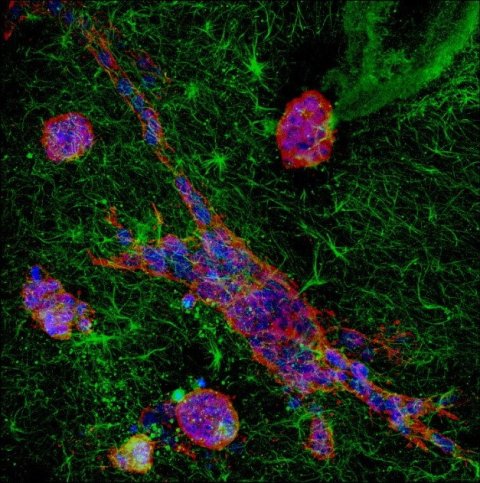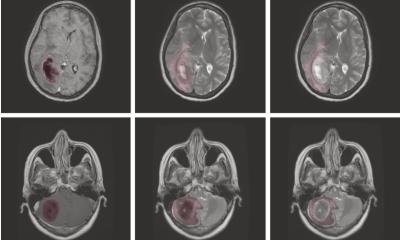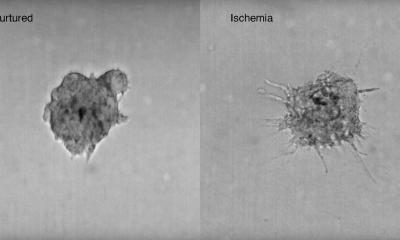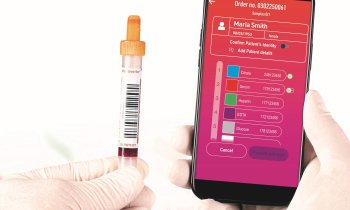News • Tumour movement across tissues
Understanding metastasis: migration strategies of ovarian cancer
The spread of tumour from the primary cancer site to distant organs, called metastasis, has puzzled scientists for many years – they are only now beginning to pinpoint triggers and mechanisms that drive this process.

Image courtesy: Ramray Bhat/IISc
A new study from the Indian Institute of Science (IISc) shows how inherent variations in a cancer cell and its interactions with its surroundings mould its migration. The findings, published in the Biophysical Journal, reveal that cancer cells seem to adapt their migratory pattern depending on the physical and biochemical characteristics of their surrounding, called the microenvironment.
The researchers studied two types of ovarian cancer cells – OVCAR-3, which has a well-structured polygonal shape, and SK-OV-3, which has a naturally elongated spindle shape. Both of these cells metastasise and invade tissues. By placing these cells on soft and stiff surfaces that mimic healthy and diseased tissues, the researchers observed how each type adapted its movement on different surfaces.
On soft surfaces similar to healthy tissue, both cell types moved slowly in random directions. But on stiff surfaces, which mimic the tough, scarred tissue around tumours, the cells are more deformable and respond differently. “Based on previous literature, I expected stiffness to be an important factor in aggravating cancer cell migration. However, what I did not expect was that the epithelioid ovarian cancer cells (OVCAR-3) were more migratory than the mesenchymal cells (SK-OV-3) on stiffer matrices,” says Madumitha Suresh, former MTech student at the Department of Bioengineering (BE) and first author of the study.
This will shed fresh light on the pathology of ovarian cancer, a disease that is characterised by rapid metastasis and high morbidity
Ramray Bhat
The researchers also observed a unique movement pattern in the OVCAR-3 cells, which they called “slip.” In most cells, the direction of movement aligns with the shape of the cell, with the cell’s “front” leading the way. But when the OVCAR-3 cells moved on stiff surfaces, this alignment broke down. Their movement became less coordinated with their shape, almost as if they were sliding or slipping instead of moving in a straight line. Motivated by these unexpected results, the researchers sought to understand the process using quantitative approaches.
Existing methods for studying how cancer cells move are either mathematical approaches that don’t capture changes over time or complex computer-based approaches, such as machine learning, that are challenging to use. To address these limitations, the researchers created a more accessible software toolkit that combines Shannon entropy (a mathematical concept that captures randomness) with previously used movement- and shape-based measures. This toolkit allows researchers to see changes in cell behaviour over time and can be easily applied to live cell tracking data. This allows the data to be analysed and quantified numerically as compared to drawing inferences verbally. Only through looking carefully for correlations within the toolkit measures were the researchers able to identify how the epithelioid cancer line exhibits a less restrained relationship between its shape and motion, allowing it to migrate in diverse and surprising ways.
“We aim to extend our study to decipher the collective dynamics of such cancer cells, especially in more complex 3D environments,” says Ramray Bhat, Associate Professor at the Department of Developmental Biology and Genetics and corresponding author of the study. “This will shed fresh light on the pathology of ovarian cancer, a disease that is characterised by rapid metastasis and high morbidity.”
Source: Indian Institute of Science
25.11.2024











